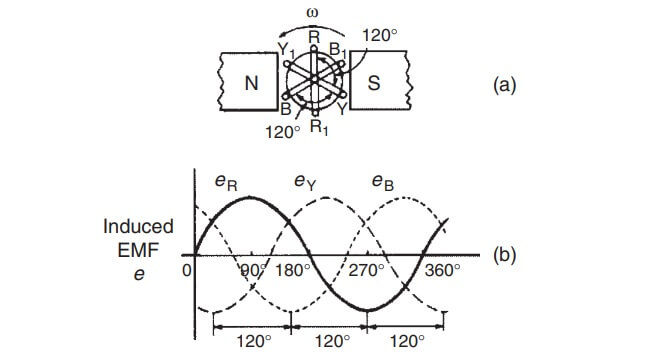A three-phase supply is generated when three coils are placed 120° apart and the whole rotated in a uniform magnetic field as shown in Fig (a). The result is three independent supplies of equal voltages which are each displaced by 120° from each other as shown in Fig (b).
The convention adopted to identify each of the phase voltages is: R-red, Y-yellow, and B-blue, as shown in Fig.

The phase-sequence is given by the sequence in which the conductors pass the point initially taken by the red conductor. The national standard phase sequence is R, Y, B.
A three phase a.c supply is carried by three conductors, called ‘lines’ which are coloured red, yellow and blue. The currents in these conductors are known as line currents (IL) and the p.d.’s between them are known as line voltages (VL). A fourth conductor, called the neutral (coloured black, and connected through protective devices to earth) is often used with a three phase supply.
If the three-phase windings shown in Fig are kept independent then six wires are needed to connect a supply source (such as a generator) to a load (such as motor). To reduce the number of wires it is usual to interconnect the three phases. There are two ways in which this can be done, these being:
(a) a star connection, and (b) a delta, or mesh, connection. Sources of three-phase supplies, i.e. alternators, are usually connected in star, whereas three-phase transformer windings, motors and other loads may be connected either in star or delta.
| Read More Topics |
| What is digital to analogue D/A conversion |
| Introduction to operational amplifiers |
| Maximum power transfer theorem |





